#hemidactylus turcicus
Text

A tiny Mediterranean House Gecko! Not Juice though-
#Phylum: Chordata#Class: Reptilia#Order: Squamata#Family: Gekkonidae#Genus: Hemidactylus#Hemidactylus turcicus#mediterranean house geckos#house geckos#geckos#lizards#reptiles
3 notes
·
View notes
Text

Found a little friend :)
Mediterranean gecko (Hemidactylus turcicus)
#Mediterranean gecko (Hemidactylus turcicus)#gecko#lizard#Saurology#zoology#animals#nature#naturecore#nature photography#photography#animal photography#wildlife#original photographers#nature aesthetic#wild animals#wildlife photography#original photography on tumblr#do not upload on other sites/steal
22 notes
·
View notes
Text

European leaf-toed gecko (Euleptes europaea) ; Mediterranean house gecko (Hemidactylus turcicus) ; Moorish gecko (Tarentola mauritanica)
Reptiles and Amphibians of the World. Written by Hans Hvass. Illustrated by Wilhelm Eigener. Originally published in 1958.
Internet Archive
#reptiles#lizards#geckos#european leaf-tailed geckos#mediterranean house geckos#moorish geckos#Wilhelm Eigener
163 notes
·
View notes
Text
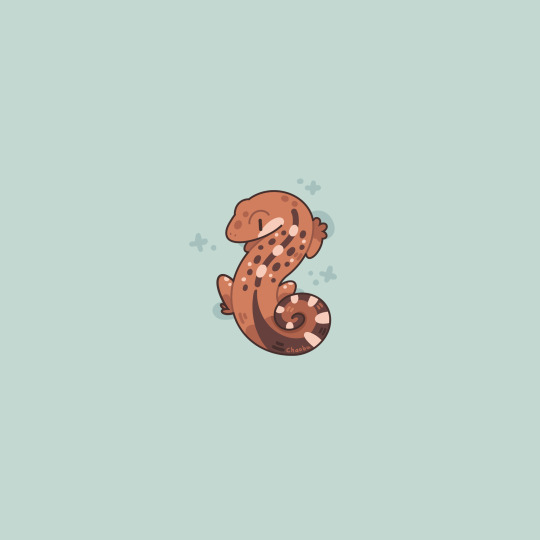




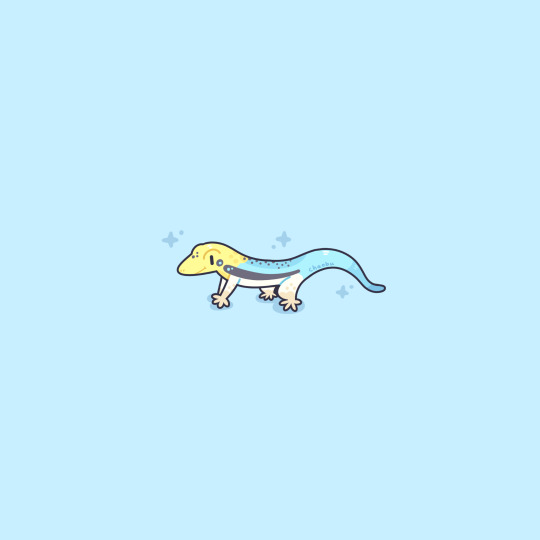
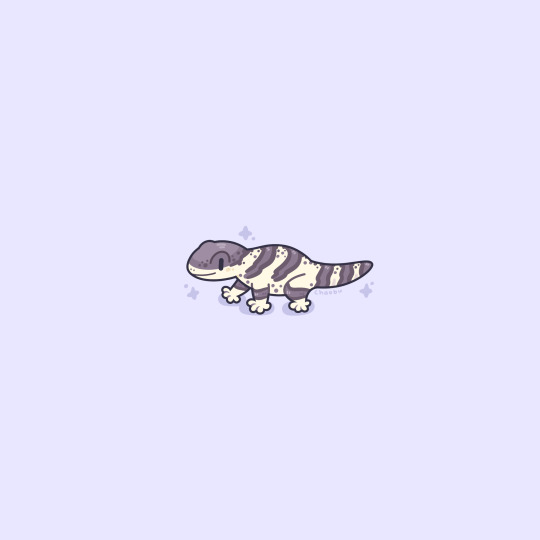
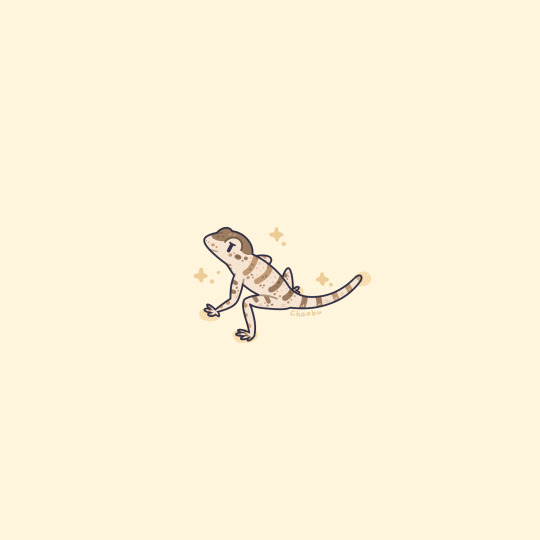
Tiny geckos [3/4]
17 - Cat gecko (Aeluroscalabotes felinus)
18 - Crested gecko (Correlophus ciliatus)
19 - Mediterranean house gecko (Hemidactylus turcicus)
20 - Tokay gecko (Gekko gecko)
21 - Leachie gecko (Rhacodactylus leachianus)
22 - Yellow-headed day gecko (Phelsuma klemmeri)
23 - Banded velvet gecko (Homopholis fasciata)
24 - Persian spider gecko (Agamura persica)
166 notes
·
View notes
Photo

©photography by Walter Jenkel 2022 Mediterranean house gecko (Hemidactylus turcicus turcicus) WALTER JENKEL @WalterJenkel
#mediterraneanhousegecko #hemidactylusturcicus #salamanquesarosada #gecocaserodelmediterraneo #walterjenkel
Promocionar
9 notas
55 notes
·
View notes
Note
Please and thank you: tell me something about the desert, I’ve never met one, but would like to. Something big or small, just something lovely?
in the sonoran desert, when it rains during the monsoon, the desert petrichor mingles with the exudates of the creosote/chaparral and makes the most incredible scent. i smelled in when i visited in 2021 and it made me cry instantly
in phoenix, the introduced mediterranean gecko (Hemidactylus turcicus) has become incredibly common, and most of my childhood lizard memories are either of encounters with them, or with the tree lizard (Urosaurus ornatus). the geckos are really hidey and stay in the shadows and come out at night (you'll see them a lot around lamps eating the attracted insects), but the tree lizards are showy, and they love to dash around on cinderblock walls and soak up the sun, and do pushups at other tree lizards (males have a bright blue patch on their throat). until recently tree lizards were classified as part of a larger Iguanidae family, but were recently re-classified into the Phrynosomatidae family, which also includes the horned lizards* and spiny lizards, and you can see the relation between them in the shape of the top of their skull around the parietal eye. also i just found out that the oldest known member of this family, excavated in Mongolia, has been named Desertiguana, not to be confused with the desert iguana (Dipsosaurus dorsalis) which is found in the sonoran desert (& bordering deserts)
another incredible thing about the desert are tadpole shrimp (Triops) and spadefoot toads (genus Spea and Scaphiopus). during the monsoon these'll pop out of the dust and spend the next week or so fucking in the very temporary pools, and lay their eggs. the shrimp eggs will not hatch (and iirc need to be dried out before they will hatch) and will settle into swiftly drying mud. the spadefeet eggs will hatch and then mature incredibly swiftly, and the little toads will dig into the drying dirt and cover themselves with a membrane that will keep them moist until the next rains come.
also the sonoran desert at sunrise is just incredible, visually, and also aurally. all of the many many species of bird found in the desert sending out their symphonic cacophany into the morning. warbling cactus wren, whistling thrasher's and creaking grackles and the little cheep of the verdin (a little green-grey bird with a bright yellow head that's often found on the palo verde, which has green bark and bright yellow flowers). in some areas you might see gila woodpeckers nesting in holes in saguaros, and in the phoenix area a population of introduced peach-faced lovebirds has become established, and occupy seemingly a niche that nothing else was in, and sometimes you might see them amongst the cactopodes also.
*these fuckers eat ants and are so specialized in eating ants that they have a compound in their blood to neutralize formic acid and if they don't eat enough ants that need neutralized the compound builds up and poisons them. also some species can shoot blood out of their eyes. please don't make them do this
8 notes
·
View notes
Text
Does anyone know if mediterranean geckos (Hemidactylus turcicus) can be kept as pets? if so I want to convince my mom to catch the ones in her yard and keep them inside. they’re invasive here in Georgia, so removing them from the environment one way or the other is kind of important. It would be nice if she could just keep them as pets instead of just buying fancy ones.
We saw at least three of them last night.
2 notes
·
View notes
Text
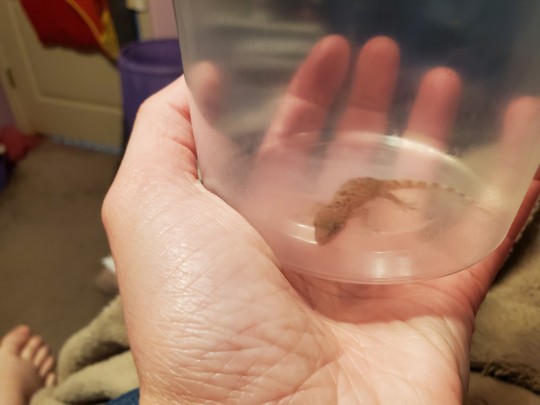

This Mediterranean house gecko (Hemidactylus turcicus) almost froze to death outside a few days ago. They're invasive to my area so if it survives transitioning to captivity, it'll be the latest addition to my creachur room
2 notes
·
View notes
Photo
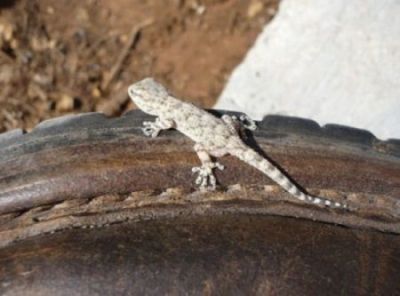
Nuovo post su https://is.gd/NR4Eer
Nuove scoperte sullo straordinario mondo dei Gechi (seconda parte)
di Sandro D’Alessandro
Piccole storie di piccoli Gechi alla ricerca di una vitamina
Ma, alla luce delle possibilità dell’affine Geco comune di cambiare colore non solo nel senso del melanismo, ma di un vero e proprio considerevole mimetismo, appare più che plausibile l’ipotesi (suffragata peraltro dalla foto riportata) che il Geco di Kotschy sia dotato anch’esso, e forse a maggior ragione, di potenzialità mimetiche di alto livello.
Nel caso del Geco verrucoso (Hemidactylus turcicus), con la cautela che accompagna chi fa delle affermazioni inedite, riportai che, più che di un melanismo che procede di pari passo all’aumento della luminosità, si potesse parlare al contrario di una riduzione della pigmentazione in concomitanza di ridotte illuminazioni (in condizioni di ridotta luminosità il corpo di questo Geco, specie se si tratta di un individuo giovane, appare quasi trasparente). Ma si trattava ragionevolmente di un eccesso di prudenza, dato che in questo Geco la depigmentazione non si limita a far assumere all’animale un colore semplicemente più chiaro, ma si spinge ben più oltre, fino a rendere evidenti gli organi interni; è poi la possibilità del piccolo Sauro di assumere una colorazione differente a rendere meno visibili i suoi organi interni. Ciò indica senza dubbio una capacità di cambiare colore di livello superiore rispetto a quella della semplice depigmentazione, per quanto in tale specie non si evidenzi una netta tendenza al mimetismo allo stesso modo che nel Geco comune.
Un Geco verrucoso, rinvenuto da chi scrive al coperto nel periodo invernale, risultò quasi privo di colorazione, al punto da rendere possibile vedere gli organi interni attraverso la pelle. Se la cosa può essere messa in relazione con le basse temperature, essa può però, forse a maggior ragione, essere connessa con le basse intensità luminose della stagione, di solito caratterizzata anche da cielo coperto, e con il fatto che l’animaletto era stato sorpreso in un pozzetto, con illuminazione pressoché assente.
Per quanto riguarda il melanismo vero e proprio, documentato per il Geco di Kotschy e rilevabile da chiunque nel Geco comune, è difficile dire se la variazione di colore sia legata in qualche modo anche alla temperatura ambientale. Di fatto, il rendersi più scuro ha fra i suoi effetti quello di assorbire maggiore radiazione calorifica, esistendo un fenomeno fisico che sancisce effettivamente una relazione diretta fra la colorazione ed il riscaldamento corporeo.
Non va però dimenticato che, almeno in apparenza, il colore scuro del Geco comune sia in relazione diretta non tanto con la temperatura ambientale, quanto con la luminosità dell’ambiente; in tal modo, la possibilità di diventare più caldo sarebbe un effetto secondario della variazione cromatica dell’animaletto.
È questa un’osservazione molto interessante, poiché non limita il discorso al solo immagazzinamento di calore (che, essendo il corpo del Geco di piccole dimensioni, oltre che dotato di numerosi elementi di dissipazione della temperatura -coda, bitorzoli, zampette, ecc.-, avrebbe effetti di breve durata e pertanto poco significativi dal punto di vista dell’efficienza metabolica dell’animale), ma si estende ad una “intelligenza di specie” che fa sì che essa adotti un comportamento avente importantissimi effetti sulla metabolizzazione della vitamina D. Il che, in un animale tendenzialmente notturno e sempre pronto a rifugiarsi all’interno di cavità oscure, è quanto di più opportuno ci possa essere.
Giovane Geco fotografato su uno scarpone. Si noti la concordanza fra il colore dell’animaletto ed il colore del substrato cementizio, su cui l’animale era prima di salire sullo scarpone (foto: S. D’Alessandro)
Sorprendenti scoperte sul più comune dei Gechi: il… Geco comune
Nel Geco comune (Tarentula mauritanica) – di seguito chiamato semplicemente “Geco” – che compartecipa sia della possibilità di diventare più scuro in funzione della luminosità ambientale che della possibilità di cambiare colore nel senso di un vero e proprio mimetismo, la caratteristica della possibilità di variazione cromatica si annida in processi che sono forse più complessi rispetto a quanto avviene in altri Gechi ed avvicina in maniera alquanto singolare l’animaletto al ben più proverbiale Camaleonte.
Con questo il Geco condivide la capacità di assumere lo stesso colore del substrato sul quale l’animale si trova, o per lo meno un colore molto simile, adattando inoltre le sue tonalità a quelle dell’ambiente, del quale è in grado di riprodurre le linee, le chiazze, le sfumature.
Un Geco comune dal colore molto scuro particolarmente appariscente sul muro chiaro di una casa diroccata. (foto: S. D’Alessandro)
Il colore, di norma concorde con l’ambiente, soggiace però alla regolazione cromatica del Geco in funzione della luminosità, il quale si giova, nelle giornate assolate, di un inscurimento della sua colorazione al fine dell’assorbimento di una maggior quantità di radiazioni solari, anche a scapito di un suo evidentissimo risalto sul substrato, magari molto chiaro, su cui esso si trova.
Mimetismo, melanismo o entrambi? Una speculazione su un interessante dilemma
E’ l’animale in grado di modulare la sua variazione di colore, optando per il melanismo anziché per il mimetismo? Difficile dirlo.
E’ un fatto che, quando l’illuminazione è molto bassa, è possibile rinvenire dei Gechi comuni il Geco comune pressoché candidi[1] nelle ore serali o notturne[2]. Ciò, che è stato rilevato da chi scrive su muri bianchi, avviene nelle ore notturne, come dimostra per contro la foto sopra che, scattata anch’essa su un muro molto chiara, evidenzia un Geco comune estremamente scuro alla piena luce del giorno.
E’ possibile presumere due meccanismi diversi, entrambi finalizzati alla conservazione dell’animale:
– uno, il melanismo dovuto alle forti intensità luminose, destinato ad esplicare i suoi vantaggi nel medio e lungo termine, legato all’acquisizione di luce necessaria per il buon funzionamento della vitamina D, che svolge un ruolo fondamentale nel regolare l’omeostasi fosfo-calcica e in particolare i processi di mineralizzazione ossea, efficace rimedio contro il rachitismo, destinato a garantire la sopravvivenza dell’animale nel corso della sua vita;
un altro, il mimetismo, con effetti nell’immediato, avente la funzione di nascondere l’animale alle potenziali prede ed ai potenziali predatori;
una via intermedia è quella del melanismo per motivi di mimetismo, come ad esempio si verifica su tronchi dalla corteccia scura, quali ad esempio gli alberi di Olivo; in tal caso si ottiene il massimo del vantaggio per l’animale, che si trova contemporaneamente nelle situazioni ottimali, potendo massimizzare sia il metabolismo della vitamina D che il mimetismo per motivi di predazione o di protezione.
Un Geco comune quasi completamente privo di pigmentazione, fotografato di notte su un muro alla luce flebile di un lampione (Foto: S. D’Alessandro)
[1] Il fenomeno è, come detto, ancora più appariscente nel Geco verrucoso, che decolora la sua pelle a tal punto da permettere quasi di vedere i suoi organi interni. Va detto a tal proposito che il corpo dell’Emidattilo è, a maturità, molto meno massiccio di quello del Geco comune e che pertanto si presta a dare maggiore risalto a ciò che lo costituisce internamente, ma la sua pelle, indubbiamente molto più sottile e meno scabrosa di quello del “cugino maggiore”, gli permette di dare un ben maggiore rilievo alle differenze cromatiche (per quanto non strettamente “mimetiche”) che l’animale manifesta.
[2] La cosa va in direzione opposta a quanto rilevato in altre occasioni, in cui l’assunzione di colore da parte dell’animale risente del colore di ciò che appare nel suo campo visivo: di sera il Geco vede colori molto scuri, ma in questo caso l’animale non sembra concordare con essi.
#Geco comune#geco di Kotschy#Geco verrucoso#Hemidactylus turcicus#melanismo del geco#mimetismo del geco#Sandro D’Alessandro#Tarentula mauritanica)#Ambiente#Spigolature Salentine
0 notes
Photo

and she's home! I'm pretty sure she's a female Mediterranean house gecko, not sure how she got up here, it's COLD
#lizards#house gecko#mediterranean house gecko#hemidactylus turcicus#robyn shoosh#shes awfully cute#anybody wanna help me name her?
6 notes
·
View notes
Text

Juice, the Mediterranean house gecko.
#Phylum: Chordata#Class: Reptilia#Order: Squamata#Family: Gekkonidae#Genus: Hemidactylus#Hemidactylus turcicus#Juice#Mediterranean house geckos#house geckos#geckos#Lizards#reptiles#My favs#my pets#cute animals
3 notes
·
View notes
Photo
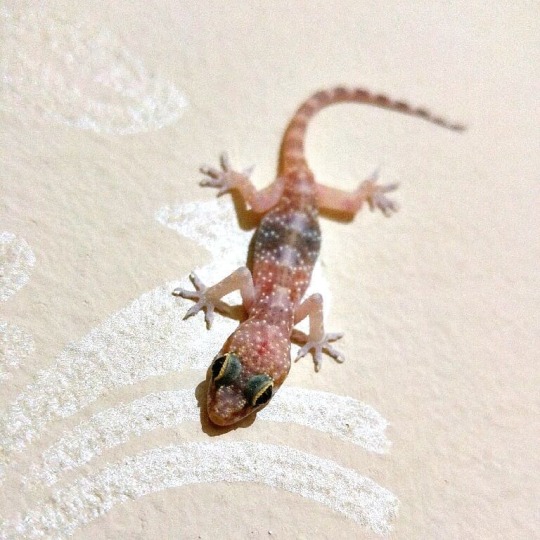
Bir ara Adana'da bizimle birlikte yaşayan bu minicik şeylere o kadar farklı isimler verilmiş ki; El Öpen, Köy Göçüren, Süleymancık, Türk Keleri, Akdeniz Sakanguru, Kertenkele, Hemidactylus Turcicus, Mediterranean House Gecko... . Normal kertenkelelerden farklı olarak; boyutları çok daha küçük, tabiri caiz ise PARMAK KADAR, derileri şeffaf ve mor, turuncu, yeşil, pembe... gibi renklerde. İç organlarını da görebiliyorsunuz. . Bazıları onlardan tiksinse, korkup kaçsa da bence çok güzel ve sevimliler. . Zarûrî bir durum olmadıkça hayvanları doğal ortamlarından koparıp evde beslemeye karşıyım. Lâkin besleyecek olsaydım bunlardan beslerdim galiba. . Baktıkça tefekkür etmekten alıkoyamıyorum kendimi. Yaratılanın güzelliği, yaratan Allah'ın güzelliğinden, kudretinden kaynaklanıyor. . Bana hep Allah'ı hatırlatıyorlar. İşte tam da bu yüzden çok seviyorum. . #tefekkür #islam #tevhid #tawheed #elöpen #süleymancık #kertenkele #hemidactylusturcicus #turkey #turkiye #adana #izmir #istanbul #antalya #ankara #animals #cute #sübhanAllah #creationsofallahswt (Adana, Turkey) https://www.instagram.com/p/CDq_IVrnqBz/?igshid=1ueinqdpv406e
#tefekkür#islam#tevhid#tawheed#elöpen#süleymancık#kertenkele#hemidactylusturcicus#turkey#turkiye#adana#izmir#istanbul#antalya#ankara#animals#cute#sübhanallah#creationsofallahswt
1 note
·
View note
Text

Grzimek's Animal Life Encyclopedia. Volume 6: Reptiles. Written by Bernard Grzimek. 1984.
1.) Tokay gecko (Gekko gecko)
2.) Peacock day gecko (Phelsuma quadriocellata)
3.) Auckland green gecko (Naultinus elegans)
4.) Kuhl's flying gecko (Ptychozoon kuhli)
5.) Mediterranean house gecko (Hemidactylus turcicus)
6.) Common wall gecko (Tarentola mauritanica)
7.) Day gecko (Phelsuma madagascariensis)
8.) Common flat-tail gecko (Uroplatus fimbriatus)
#reptiles#lizards#geckos#tokay gecko#peacock day gecko#auckland green gecko#kuhl's flying gecko#mediterranean house gecko#common wall gecko#day geckos#common flat-tail gecko#signature
172 notes
·
View notes
Text
Gekon śródziemnomorski - codzienny gość w cypryjskich domach
Ta mała jaszczurka żywi się m.in pająkami, komarami i często gości w naszych mieszkaniach #Cypr #gekon
Żywi się m.in. komarami, muchami i karaluchami – jest naszym przyjacielem
Jest bardzo mała (maksymalnie 15 cm) i oczyszcza domy i mieszkania z insektów. Jest całkowicie niegroźna dla ludzi a zagrażają jej między innymi koty – skoro ucieka to trzeba ją gonić – z takiego założenia wychodzą chyba nasze zwierzaki.
Żywią się praktycznie wszystkimi owadami latającymi – komary, ćmy, muchy a nawet…
View On WordPress
0 notes
Photo
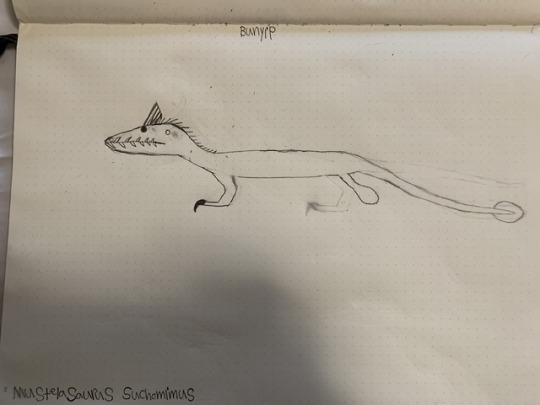
Bunyip
Kingdom: Animalia
Phylum: Chordata
Class: Reptilia
Superorder: Lepidosauria
Order: Squamata
Infraorder: Gekkota
Family: Mustelasauridae
Genus: Mustelasaurus
Species: M. suchomimus (”crocodile-mimicking weasel lizard)
Ancestral species: Hemidactylus turcicus (Mediterranean house gecko)
Time period: early to late Solocene (105 million years to 140 million years in the future).
Information: named after the aquatic monster of Aboriginal Australian mythology, the Bunyip is an evolutionary oddity. It appears to be midway between terrestrial reptiles and evolving to a more-aquatic lifestyle, hence its underdeveloped tail fin and its back legs becoming fins. The crest you see on its head in this sketch is something that only males have, and it is a brown color normally but will turn bright-red during the mating season. The Bunyip is a murky green color, and is about the size of a large saltwater crocodile with an attitude to match. It stalks the waterways of southern and eastern Thalassia, and will move between estuaries via the ocean. The Bunyip is an expert ambush predator, laying in wait for prey for extended periods of time before lunging in for the kill. It primarily feeds on land animals that live near the water, but it will also go for fish and low-flying birds, as well as even smaller Bunyips. Though this creature shows no outward aggression towards humans, it would still be wise to exercise caution while approaching it.
1 note
·
View note
